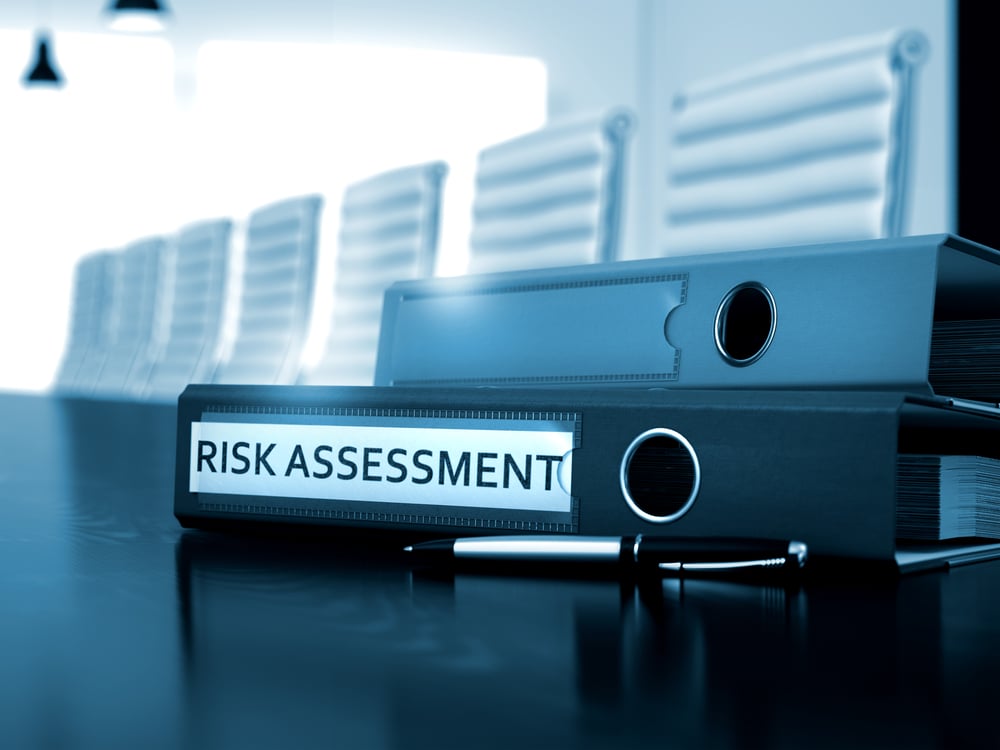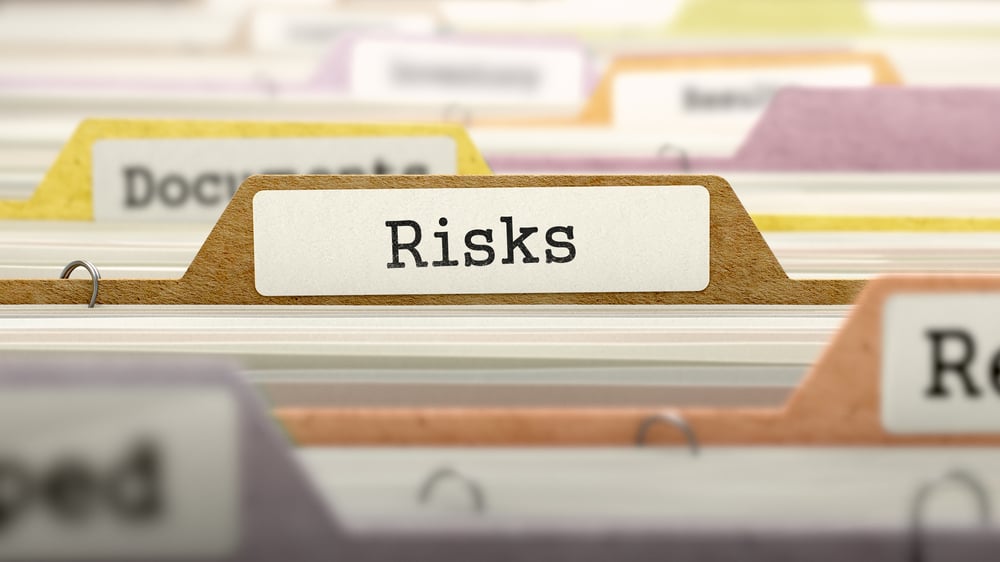Organizations face many compliance risks. To manage these risks, organizations must have an...
What Are Risk Management Services?

Risk management services are requested by a customer and can be composed of either: identifying and quantifying risks; or providing advice on how to manage them.
Risk management services may also involve: establishing risk management policies; or implementing, monitoring and reviewing these policies.
For example, a bank might carry out the following risk management services:
- establishing a formal method of selecting and approving loan applications.
- managing credit risk by monitoring customer accounts and deciding when to increase or decrease credit limits.
- carrying out regular audits of their operations to identify any problems which might need further investigation.
These services would be designed to help the organisation protect its assets, ensure compliance with relevant laws and regulations, manage risks prudently and efficiently, as well as monitor business activities effectively.
What risks are covered?
The risks that can be managed using these services will depend on the situation of each individual client. Because financial institutions are particularly concerned about maintaining an appropriate level of liquidity (cash), they tend to focus on providing services that will help them to manage market, interest rate and credit risks.
Covered risks can include: :
● interest rates;
● foreign exchange risk;
● commodity prices;
● income levels (for example as represented by pensions or insurance); and/or
● financial assets such as shares.
What are the steps in the process?
The services required for each client will depend on their specific needs and priorities. However generally speaking, this is what happens:
1) The client describes the kind of service(s) they would like and why.
2) A consultant undertakes a preliminary review of the information provided and presents options for possible services.
3) The client selects a preferred service(s) and makes any necessary revisions to their initial request.
4) A consultant then writes a detailed proposal for the services selected.
5) The client reviews, accepts and signs the proposal.
6) As well as drafting an agreement between the parties, the consultant will also prepare a plan of work, which includes what needs to be done, when it should be completed by and who is responsible for each task.
7) Work begins in accordance with the plan of work set out in step 6).
Benefits of Risk Management Services
Risk management services can provide a number of advantages including:
1) They help to ensure that risks remain within acceptable limits;
2) They help the client to achieve their strategic objectives;
3) They increase transparency to stakeholders; 4) Identifying and understanding risks in advance can also lead to more efficient planning, better use of resources, shorter lead times for new projects and lower costs.
What are the main limitations?
Risk management services require investment of time and money, which means that they may not be affordable for small companies or individuals. However, there are other ways that you could get expert help without having to spend money, such as self-help courses or free webinars.
These services take time before they begin providing any tangible benefits - it is essential therefore that you start this process well ahead of when you need it to ensure its success.
In addition, when choosing a service provider it is important to ensure that they have the necessary expertise and experience for this kind of work.
Failure to consider these issues in advance could lead to loss of time and money, as well as jeopardising any practical benefits.
Risk management services may be appropriate for some companies but not others - you should therefore think carefully before taking on such services.
What questions should I ask?
Before signing up to any risk management services it is essential that you get answers to the following questions:
1) How long will it take before you begin providing tangible results?
2) What type of training do your staff receive?
3) Will I be expected to sign an NDA (Non-Disclosure Agreement)?
4) Will I have to sign a contract?
5) What happens if the unforeseen occurs and you are not able to complete the work on time or on budget?
6) In addition, who will be responsible for monitoring progress including conducting reviews of your service at key stages.
Defining Industry Terms and Concepts
Risk Assessments:
Risk assessments are generally undertaken either as a qualitative or quantitative exercise.
Qualitative risk assessment is based on subjective judgements of likelihood and impact, while quantitative assessments tend to be more scientific in their approach.
Risk Management:
Risk management involves evaluating risks, determining how much control you have over them and implementing measures to reduce the overall level of risk.
Internal Controls:
Internal controls monitor the day-to-day operation of your business at all levels, help ensure that instructions are followed correctly, look for signs that activities may not be compliant with procedures and policies and act quickly to correct any deviations from company rules.
Critical Processes:
Critical processes are those activities that are most vital to the smooth running of your business.
Poor performance or even temporary disruption can have a disproportionate effect, making it critical that these processes are managed effectively and efficiently.
Systems & Procedures:
As well as being documented they may be implemented, used for training purposes or reviewed on a regular basis depending on the nature of the procedures themselves. Company policies will also need to be regularly updated in line with legislative requirements or changes at board level e.g. company directors' pay, etc…
Risk Processes:
As with Internal Controls, risk processes monitor the day-to-day operation of your business at all levels and look for signs that activities may not be compliant with procedures and policies and act quickly to correct any deviations from company rules.
These differ from internal controls as they tend to focus on risk related matters rather than procedural compliance issues.
Critical Success Factors:
Critical success factors (CSFs) are those high level goals that define what must be achieved in order for your organisation to be successful. Failure to achieve these goals will likely result in failure of your organisation - even if it is well managed and complies with all relevant legislation.
Risk Conditions:
Risk conditions are the circumstances that exist within your business at a specific point in time. These can be both internal and external to your organisation.
Loss Prevention:
Loss prevention is a process aimed at identifying and dealing with potential losses.
The functional capabilities required for effective loss prevention will vary from company to company depending on their business, size and structure. Therefore a tailored approach that takes into account all elements relevant to your organisation has the best chance of success.
Emerging Risks:
Emerging risks are those which have not been properly identified and quantified. Therefore they cannot be fully assessed as to whether they may pose a threat to your organisation or not. A detailed risk assessment can help identify emerging risks so that an appropriate course of action can be taken with regards the implications of these risks on your organisation's operations.
Organisational Risks:
Organisational risks generally relate to financial, legal, regulatory and reputational issues within the business. A detailed risk assessment undertaken by a suitably qualified individual can enable you to identify any areas where organisational changes may need to take place in order for your company to avoid unnecessary exposure from potential threats associated with these types of issue.
External Consultants:
These are brought in by companies wishing to improve their performance or achieve certain business objectives most commonly in the areas of:
-Risk management;
-Regulatory compliance (e.g. identification and mitigation of cyber security risks); and
-Financial controls (e.g. review and improvement of internal processes).
The types of risk that they will typically help to manage include: Public, Operational, Strategic, Reputational/Non-financial reporting, Financial Reporting Failure to adequately address such issues could result in serious financial loss as well as damage to your company's reputation if your business is found to be negligent in carrying out its responsibilities towards stakeholders including staff members, customers and suppliers etc...
Risk Management is a process where you analyse opportunities and threats which can affect your organisation and develop effective responses to reduce the possibility of loss. Risk is a probability that an event will occur, judged as being over some threshold value.
Risks are often categorised as either Strategic or Operational risks depending on whether they relate to business objectives or day-to-day activities. Generally speaking, Operational Risks are those which can be easily identified and controlled by means of systems and procedures while Strategic Risks tend to arise from external forces beyond a clear company mandate i.e. market conditions, technology changes etc…
Strategic risk management seeks to identify these major events early enough so you have time to change your plans before it's too late - preferably without having to spend billions of dollars doing so!
In summary, do not find yourself in a position where you have paid for one sort of service but received another because it was poorly delivered. I would recommend paying a few pounds here and there for good advice from people who know what they are talking about rather than going all out to buy something without doing research on the company first. There is no need to pay top dollar when equally strong companies exist that offer good service for less money.

Risk management training Online
Course overview:
Risk management is the process of identifying, assessing, and controlling risks arising from operational activities and decisions. The goal of risk management is to protect an organization's capital and earnings. In order to achieve this goal, organizations must have a clear understanding of the types of risks they face and the potential impact of those risks.
This course will provide you with a framework for understanding and managing risk. You will learn about the different types of risk, how to identify them, and how to create a risk management plan. By the end of the course, you will be able to identify risks in your own organization and put together a plan to mitigate them.
This course is delivered entirely online, meaning you can study at a time and place that suits you. All you need is an internet connection and a computer or mobile device.
Who this course is for:
This course is designed for business professionals who want to learn about risk management. It will be of particular interest to those who are involved in making decisions that could impact the organization's bottom line.
What you'll learn:
By the end of this course, you will be able to:
- Understand the concept of risk and its importance to organizations
- Identify the different types of risk
- Develop a risk management plan
- Create a process for monitoring and responding to risks
Course Outline:
Module 1: Introduction to risk management
- Define the term ‘risk’.
- Explain the importance of risk management in organisations.
- List the different types of risks that can affect businesses.
- Identify the signs of a potential risk.
Module 2: Assessing risks
- Explain the purpose of risk assessment.
- List the different methods of risk assessment.
- Evaluate the different methods of risk assessment.
- Select the most appropriate method of risk assessment for your organisation.
Module 3: Control measures
- Explain the purpose of control measures.
- List the different options for controlling risks.
- Evaluate the different options for controlling risks.
- Select the most appropriate option for controlling risks in your organisation.
Module 4: Monitoring and review
- Explain the purpose of monitoring and reviewing risk management plans.
- List the different methods of monitoring and review.
- Evaluate the different methods of monitoring and review.
- Select the most appropriate method of monitoring and review for your organisation.
Each module takes approximately 1-2 hours to complete. At the end of each module, there is a short assessment to test your knowledge and understanding of the material covered.
Upon successful completion of all four modules, you will receive a certificate of completion.



